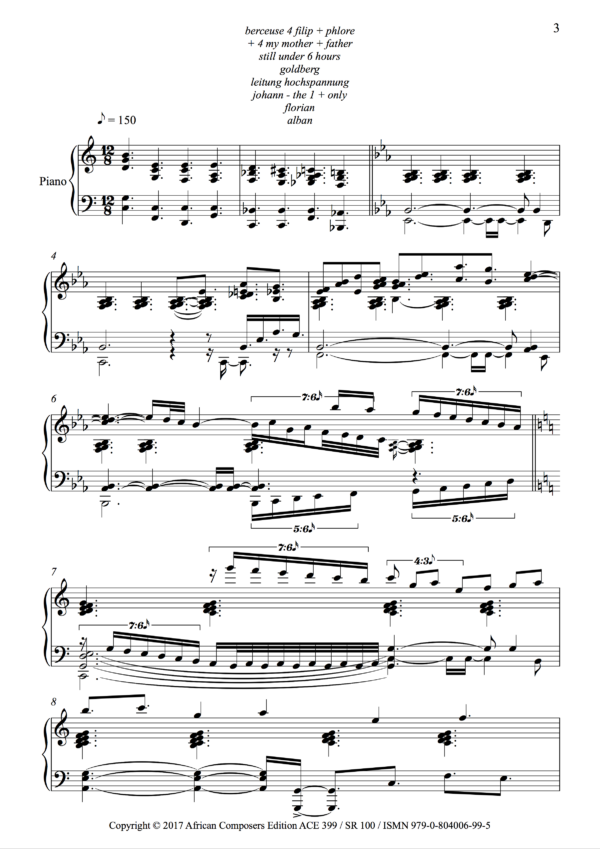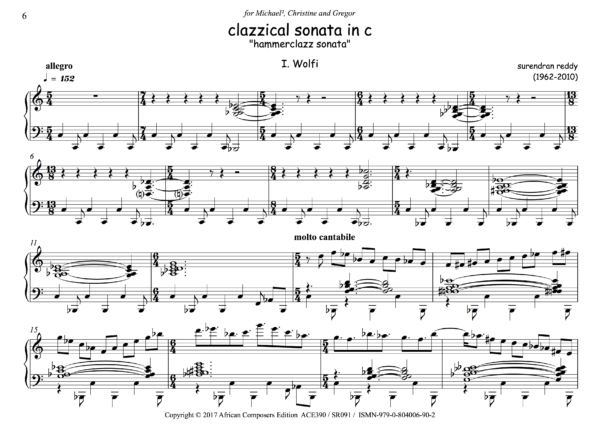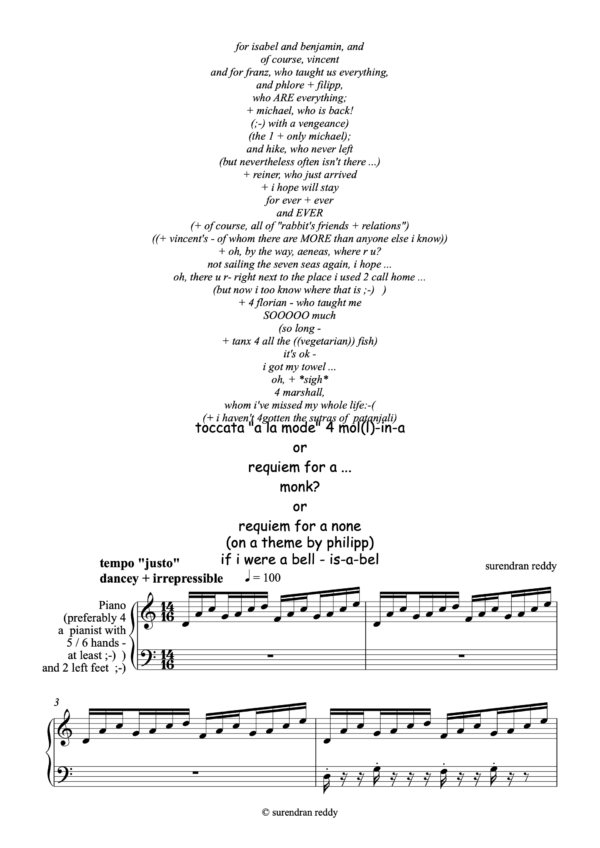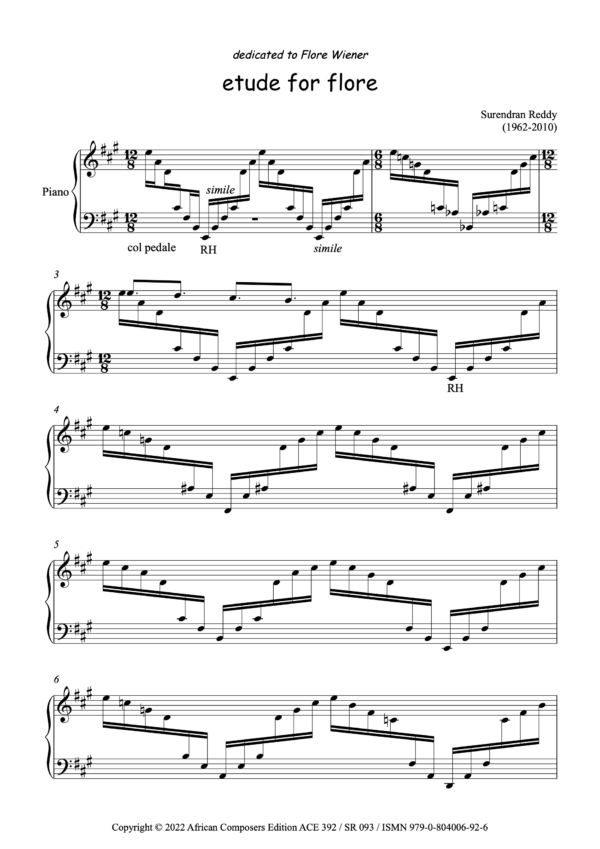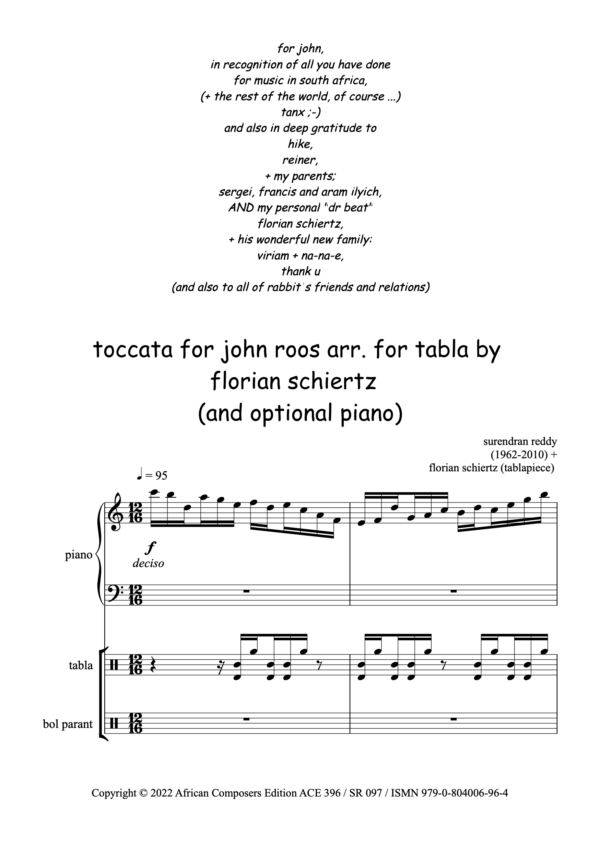clazz etude no. 3 for philipp

R39.00
With ballade for florian (2005) and especially clazzical sonata in c – the ‘hammerclazz’ (2006) Reddy was well into his ‘clazz’ style, ‘compounding the words classical and jazz, which formerly in music history denoted styles that were kept quite distinct from each other’, as he puts it. Many of these later works, written in the last few years of Reddy’s life, are long and virtuoso, with sections of repeated bars for improvisation, or to be repeated ‘until right hand falls off’. They are almost conceptual, in the sense that it becomes as important to read them as to play them. Reddy produced these works at great speed, three in 2005, five in 2006, and 10 in 2007. Reddy left 81 Sibelius files of clazz etude no. 3 for philipp (there are no nos. 1 and 2), which date from 10h21 on 16th December 2006 to 18 December 2006, a work 525 bars long written in three days. He finished it at midnight on 20th. One of his printouts has a colour photograph of the young Philipp Eden – the dedicatee – playing basketball on the front cover, and this has become the ACE score. At first, Reddy even combined this work with another solo piano work, etude pour flore (for Eden’s partner, Flore), which he had completed on 7 December: they appear one after another in one of the Sibelius files. In the end, they came to exist as two separate works, with etude for flore shorter, at 220 bars. Reddy later wrote another even more diabolical piano solo for them both, however: berceuse for filip and phlore.
The close relationship between the two pieces bespeaks the once close relationship of Philipp Eden and Flore Wiener, who lived not far away from Reddy, who was based in Konstanz, and who were at one point engaged (although they later separated without marrying). Flore is the daughter of two great friends of Reddy and his partner, Heike Asmuss: Michael and Isabel Wiener, for whom he also wrote pieces, in 2007. The final print-outs of these later works are so beautiful as publications – printed under the name ‘Dorothy Publications’, the private imprint that Reddy and Asmuss created and with beautiful cover pages that Reddy designed – that they are reproduced here exactly as they are, with kind permission of Heike Asmuss, except with the addition of an ACE cover and explanatory notes. There are instructions that might occasionally be a trifle indistinct or in slightly the wrong place, but these are not changed, in the spirit of a work that is in many ways conceptual art rather than musical score.
